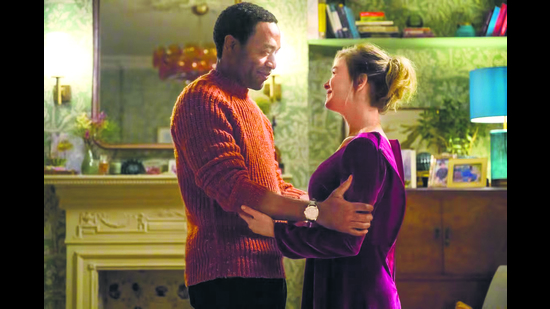Jane character energy: 250 years on, what makes Austen’s novels the stuff of blockbusters?
How is it that her stories are still being retold, in Hindi, English, Japanese, Tamil? It comes down to her eye for people, says K Narayanan.
Early on in Jane Austen’s Pride and Prejudice (1813) is a one-sentence description of Mrs Bennet, the protagonist’s mother: “The business of her life was to get her daughters married; its solace was visiting and news.”

It’s an economical sentence, two clauses, with a semicolon balancing business and pleasure, and paints an instantly recognisable picture of a person most of us remain familiar with, more than two centuries after the line was written (not to mention half a world away).
That’s the lure of Austen: an eye for people.
All we are told about the protagonist Elizabeth Bennet’s appearance, meanwhile, is that she has dark eyes, her teeth are “tolerable” and her face is “thin”, yet it is impossible to read Pride and Prejudice without forming an idea of who she is.
At the same time, Austen’s writing makes it possible to accept a range of actors in that role — a range that stretches from Aishwarya Rai (Bride and Prejudice; 2004) to Emma Corrin (in the upcoming Netflix series).
Austen’s writing makes Elizabeth a living, recognisable figure. It does the same for her family, her friend Charlotte Lucas, Mr Collins (masterfully drawn as a combination of obsequiousness and pomposity), Lady Catherine (haughty and snobbish) — each one delineated in precise, devastating prose, revealed through manners, conversation and an expertise in free indirect speech.
Austen (1775-1817), born 250 years ago this year, did this over and over, in every one of her books.


She wrote her early novels anonymously. They were written “By a lady” and initially classed in the same bracket as the later Mills & Boon and Harlequin romances. It wasn’t until one of the heavyweights of English literature, Walter Scott, lavished praise on her work that it began to be taken more seriously. Her readership swelled. Even the Prince Regent George (son of the mad King George III), who gave the name to the Regency Era, was a fan.
In 1815, Austen received an invitation from the writer James Stanier Clarke, the Regent’s librarian, to visit Carlton House, the royal residence in London. There, he supposedly passed on a message from the future King George IV that Austen was “at liberty to dedicate any future novel to him”. She dedicated her next book, Emma, to the Prince Regent that year.
She has had admirers in every generation. British prime ministers Benjamin Disraeli and Winston Churchill were fans. So were the Blues legend BB King, the comedian Harpo Marx. And the writers Rudyard Kipling, EM Forster, Virginia Woolf, Georgette Heyer and, more recently, Toni Morrison, JK Rowling and Ta-Nehisi Coates.
Natsume Soseki, the Japanese author and Austen evangelist, was working on a version of Pride and Prejudice set in contemporary Japan at the time of his death in 1916. Since then, Austen has been taught extensively in Japanese schools, and manga versions of Pride and Prejudice, Emma and Sense and Sensibility have been published.
The Jane Austen forum on Reddit has 50,000 members, and is in the top 3% of the site’s most popular subreddits. Fanfiction.net and Archive of Our Own each hold more than 5,000 stories based on Pride and Prejudice alone.
It’s not just anonymous Internet writers doing mashups of Harry Potter and Marianne Dashwood or Mr Darcy and Marvel’s Black Widow. No less a person than PD James indulged in Austen fan-fiction. Her 2011 novel Death Comes to Pemberley involves a murder at the Darcy estate, and was televised in 2013.
There have been movie adaptations of Pride and Prejudice: in 1940 (starring Greer Garson and Laurence Olivier), 2003 (transplanted to 21st-century Utah!), 2004 (Gurinder Chadha’s Bride and Prejudice), 2005 (with Keira Knightley and Rosamund Pike) and 2016 (with zombies). That’s just the movies. The TV adaptations start in 1938 and go all the way to the present year, with the upcoming Netflix version.
Pride and Prejudice may outshine her other work in the popular imagination, but numerous other books by Austen have been remade over and over. Sense and Sensibility has had multiple TV adaptations. Even Kumkum Bhagya, the Ekta Kapoor serial, was originally based on Austen’s first published novel.
Emma was remade memorably as Clueless (1995; starring Alicia Silverstone), effortlessly moving from Regency Era England to 1990s California without losing any of its appeal. Even Mansfield Park, Austen’s darkest novel, has a long list of adaptations, dating to 1930.
A whole genre — the Regency romance — owes its existence to Austen.
So does Bridget Jones’s Diary, which is Pride and Prejudice in the present day. (Watch the fourth and latest instalment, this year’s …Mad About the Boy; it moves its characters beautifully into uncertain middle-age.)
The Hindi series Trishna (1985) was Pride and Prejudice in India, broadcast on Doordarshan on Sunday mornings. Rajiv Menon’s 2000 Tamil film Kandukondain Kandukondain (I’ve Found It, I’ve Found It) is one of the best adaptations of Sense and Sensibility ever made, taking Austen’s characters seamlessly to a 21st-century middle-class South Indian milieu.
It’s not surprising that South Asia is said to have the largest Austen readership in the world. We are all familiar with mothers for whom the business of life is to get their daughters married; haughty aunts who think they’re better than their relatives; pompous name-dropping uncles; and flighty, empty-headed or pretentious young men and women.
But it isn’t just the themes, of course. If it were, we’d remember Maria Edgeworth and Susan Ferrier. We barely even remember Walter Scott, except for Ivanhoe. Austen remains vital still — because of her powers of observation, her sense of humour, and her ability to create characters who, because of their humanity, remain timeless.








